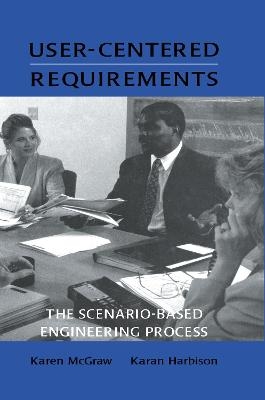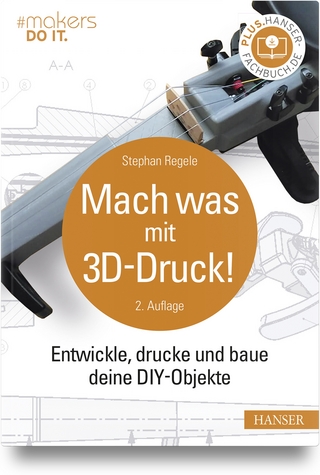
User-centered Requirements
The Scenario-based Engineering Process
Seiten
1997
Crc Press Inc (Verlag)
978-0-8058-2064-5 (ISBN)
Crc Press Inc (Verlag)
978-0-8058-2064-5 (ISBN)
The Authors demonstrate that by using scenario based engineering processes they are able to establish the scope, complexity, and size of the situation to be addressed by the projects of the SEP approach.
Developing today's complex systems requires more than just good software engineering solutions. Many are faced with complex systems projects, incomplete or inaccurate requirements, canceled projects, or cost overruns, and have their systems' users in revolt and demanding more. Others want to build user-centric systems, but fear managing the process. This book describes an approach that brings the engineering process together with human performance engineering and business process reengineering. The result is a manageable user-centered process for gathering, analyzing, and evaluating requirements that can vastly improve the success rate in the development of medium-to-large size systems and applications.
Unlike some texts that are primarily conceptual, this volume provides guidelines, "how-to" information, and examples, enabling the reader to quickly apply the process and techniques to accomplish the following goals:
* define high quality requirements,
* enhance productive client involvement,
* help clients maintain competitiveness,
* ensure client buy-in and support throughout the process,
* reduce missing functionality and corrections, and
* improve user satisfaction with systems.
This volume clearly details the role of user-centered requirements and knowledge acquisition within Scenario-Based Engineering Process (SEP) and identifies SEP products and artifacts. It assists project personnel in planning and managing effective requirements activities, including managing risks, avoiding common problems with requirements elicitation, organizing project participants and tools, and managing the logistics. Guidelines are provided for the following: selecting the right individual and group techniques to elicit scenarios and requirements from users; subject matter experts, or other shareholders; and ensuring engineers or analysts have the necessary skills.
Developing today's complex systems requires more than just good software engineering solutions. Many are faced with complex systems projects, incomplete or inaccurate requirements, canceled projects, or cost overruns, and have their systems' users in revolt and demanding more. Others want to build user-centric systems, but fear managing the process. This book describes an approach that brings the engineering process together with human performance engineering and business process reengineering. The result is a manageable user-centered process for gathering, analyzing, and evaluating requirements that can vastly improve the success rate in the development of medium-to-large size systems and applications.
Unlike some texts that are primarily conceptual, this volume provides guidelines, "how-to" information, and examples, enabling the reader to quickly apply the process and techniques to accomplish the following goals:
* define high quality requirements,
* enhance productive client involvement,
* help clients maintain competitiveness,
* ensure client buy-in and support throughout the process,
* reduce missing functionality and corrections, and
* improve user satisfaction with systems.
This volume clearly details the role of user-centered requirements and knowledge acquisition within Scenario-Based Engineering Process (SEP) and identifies SEP products and artifacts. It assists project personnel in planning and managing effective requirements activities, including managing risks, avoiding common problems with requirements elicitation, organizing project participants and tools, and managing the logistics. Guidelines are provided for the following: selecting the right individual and group techniques to elicit scenarios and requirements from users; subject matter experts, or other shareholders; and ensuring engineers or analysts have the necessary skills.
Karen L. McGraw (Author) , Karan Harbison (University of Texas at Arlington) (Author)
Contents: Part I:Introduction to the Scenario-based Engineering Process. Engineering Activities and Artifacts. Part II:Process & Techniques. Planning and Managing Effective Requirements Activities. Selecting the Right Techniques. Scenario Elicitation, Analysis, and Generation. Conducting and Analyzing Interactive Observation Sessions. Conducting and Using the Interview Effectively. Defining Work Processes and Conducting Task Analysis. Eliciting and Analyzing Domain Concepts. Using Process Tracing to Analyze the Problem-Solving Process. Conducting and Analyzing Group Sessions. Evaluating and Refining Requirements.
| Erscheint lt. Verlag | 1.3.1997 |
|---|---|
| Verlagsort | Bosa Roca |
| Sprache | englisch |
| Maße | 156 x 234 mm |
| Gewicht | 657 g |
| Themenwelt | Informatik ► Weitere Themen ► Hardware |
| ISBN-10 | 0-8058-2064-7 / 0805820647 |
| ISBN-13 | 978-0-8058-2064-5 / 9780805820645 |
| Zustand | Neuware |
| Informationen gemäß Produktsicherheitsverordnung (GPSR) | |
| Haben Sie eine Frage zum Produkt? |
Mehr entdecken
aus dem Bereich
aus dem Bereich
entwickle, drucke und baue deine DIY-Objekte
Buch | Hardcover (2023)
Hanser, Carl (Verlag)
34,99 €


